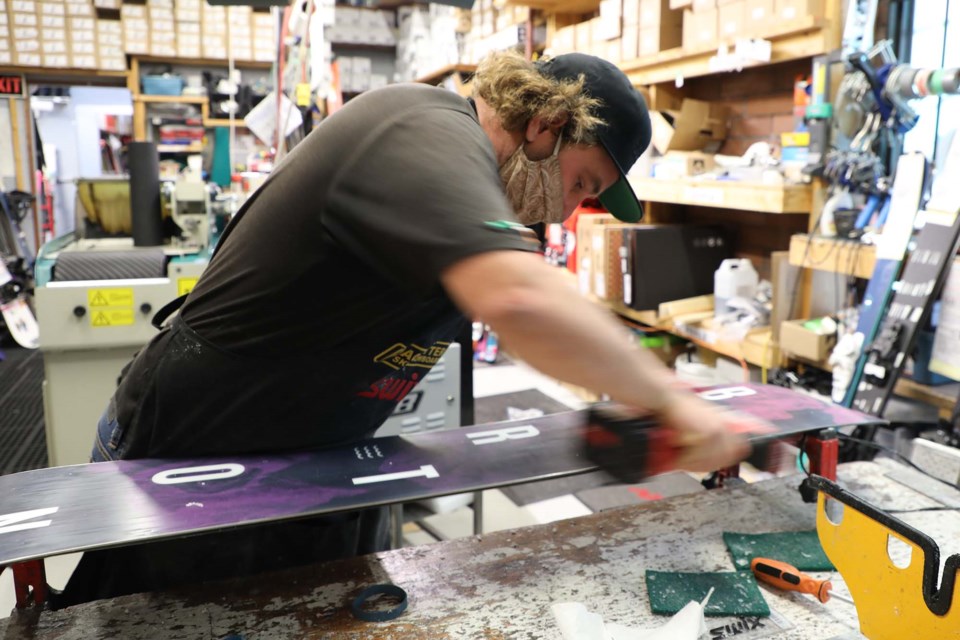The cross-country ski trails have been groomed and the ski hills have opened and if you haven’t already it might be time to take out your winter activity gear.
But before you hit the slopes or trails, there are some steps you should take to ensure your gear is fit to go.
Mathew Johnston is a former St. Albert resident whose family still lives in the city. Johnston is an avid skier and teaches kids how to ski race at a local hill. He also works at Pacesetter Ski and Snowboard in Edmonton doing technical work on equipment.
Johnston said the best thing to do at the start of the season is to get your gear out of storage.
“First of all, put it somewhere where you're going to see it that's going to guilt you all the time so that you go skiing,” he said. “But the big one is, check to make sure nothing major happened to it over the summer.”
One thing to look out for in both skis and snowboards is warping.
“Sometimes you can get water that's sat on them for a long time, right? Say you got water on them. Well, take a look. Did the water do any damage? I mean there's wood on the inside of that,” he said.
If the equipment is showing signs of warping, Johnston recommends taking it into a shop to see if anything can be done.
“It's not recommended riding it because if it explodes right in front of you. Kaboom. Like, let's be real — eight hours to Jasper [and] have your day ruined?”
The most important thing to Johnston is waxing equipment.
“Waxing is to me, it's the most important. It's a way to protect the thousands of dollars one spends on ski gear,” he said.
He recommends doing a storage wax on skis and snowboards just to keep the moisture in the plastic.
If that storage wax was done last season, it is now time to “get the wax paper out and scrape it all off.”
“Get that kind of buffed and ready for the hill,” he said.
If the equipment wasn’t storage waxed, it's time to wax it.
Johnston said waxing is relatively easy to do on your own. All you need is an iron, wax paper, scraper, and basic wax. The only thing is irons can be expensive.
“Using a regular household iron wouldn't be the best decision because then you're going to throw that all over your clothes when you're in a rush and forget,” he said.
It may, however, be worth it to get an iron depending on how many skis are between you and your family.
“If you're a die-hard it can be a worthwhile investment. And it's an excuse to have a beer in the garage,” he said.
Waxing can also be done at a ski shop.
Waxing should be done when the base of the ski or the board looks like it’s got a film on it or is looking a bit dull. Johnston recommends regular waxing depending on the amount you ride.
“Say you go for a week. I would re-wax the ski,” he said.
He also recommends getting the edges sharpened on both snowboards and downhill skis, which can help with grip.
“It's always nice to start the season on a fairly grippy note when the legs are still fresh. They may be rusty, but they're fresh,” he said.
It’s also important to check the tightness of screws on snowboard bindings and make sure your buckles are functioning and nothing is broken.
Boots also need to be looked at and tried on. Johnston said it is a good idea to check the rest of your equipment before you're four hours away in Jasper.
“Check to make sure you got your helmet, your goggles, and check your helmet, you know? Check your poles. Make sure you've got two of them, if you're a skier. For snowboarders make sure you have none of them, I suppose.”
Other than that, Johnston said just get out.
“Conditions are great. Get out there. I mean, even if conditions suck, get out there and ski — it beats work.”




